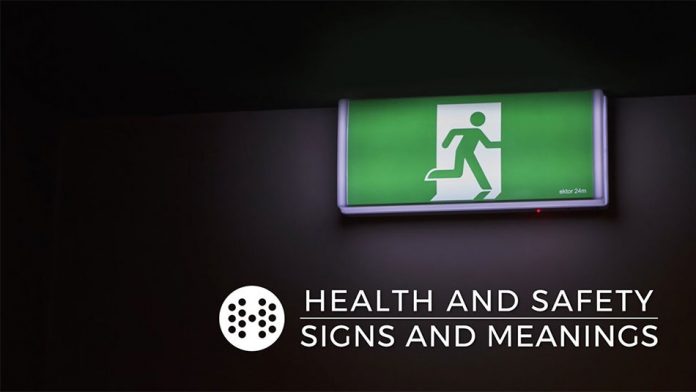Table of Contents
Safety signs are an easy, cost-effective, and fast way of conveying valuable health and safety information to everyone – staff, customers, visitors, and members of the public alike. They also allow you to conform to the Health and Safety (Signs and Signals) Regulations of 1996, which relate to providing clear, easily understood instructions and information. Finally – they make the workplace safer and reduce accidents just by drawing attention to particular potential risks and hazards.
Here’s our guide to the different types of safety signs and how to best use them to improve your environment:
Prohibition signage
This type of sign clearly states that a particular behavior is not permitted. Signs included here include the ubiquitous (and legally required) no smoking sign, no parking, and no access, for example.
These signs are typically a red circle with a diagonal bar on a white background, and with a black image.
Warning signage
Warning signs draw attention to specific hazards. Examples of this kind of signage would be dangerous chemicals, vehicle reversing, and radiation hazards.
These signs usually have an eye-catching yellow background with a black triangle containing a black pictogram demonstrating the hazard. They are also typically accompanied by text – also black on a yellow background.
Mandatory behavior signage
Mandatory signs tell people about required behaviors – so ‘eye protection must be worn’, ‘hand protection must be worn, and ‘turn off when not in use, for example.
Also, Mandatory behavior signs are blue and white – images and text in white, on a blue blocked background for contrast.
Emergency/first aid signage
These signs are the ones that show what to do in an emergency – they show the location of, or route to, first aid kits and emergency trained personnel, and describe emergency procedures.
Signs in this category have a green background with white images and text.
Photoluminescent signage
Many suppliers can provide the full range of health and safety signage with a photoluminescent finish. This makes the sign clearly visible even in dark and low-light environments. The chemicals used absorb light from the sun or artificial lighting and then emit it when it is darker. Although Cleaning is also part of Office safety and the environment.
Materials
Your signs need to be long-lasting and easy to clean, so you should look for rigid PVC or vinyl options. Both materials are budget-friendly, lightweight, and easy to keep clean, and they will retain coloring and contrast for many years.
Installation
You have a choice here between self-adhesive and non-self-adhesive. If you are putting your signature on a door or cabinet, self-adhesive is probably the easiest option, whereas if you are planning to put it on a wall then you might want to move more towards non-adhesive.
Make sure that, wherever you put your health and safety signage. It is unobstructed at all times (so not behind a door or piece of equipment, where a forklift might be parked to block it, etc) and at eye level. These signs need to be seen – you’re not just trying to conform to the legislation, you’re improving the health and safety of your staff and customers.















